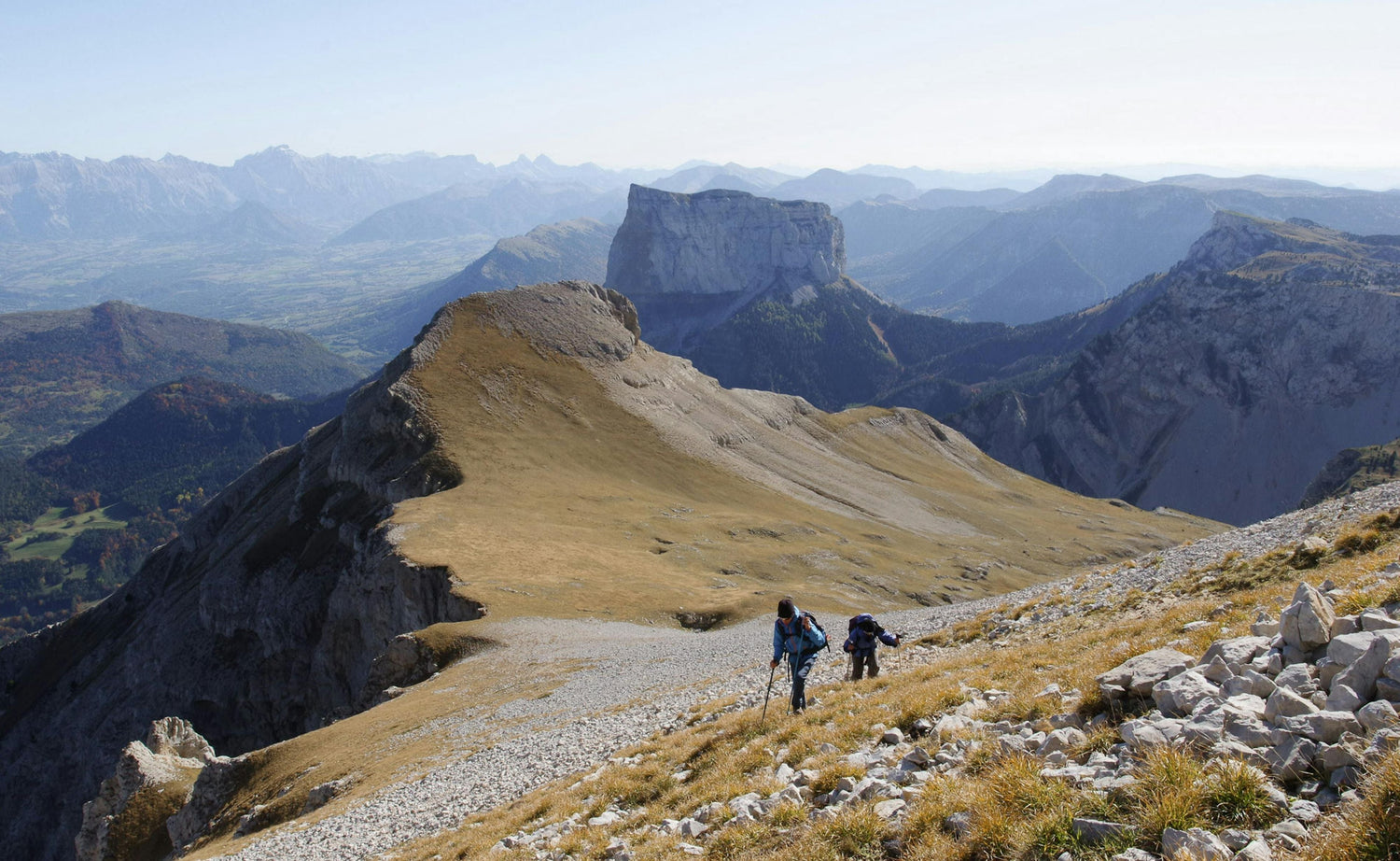Summary
Democracies in danger :
Now that the intention is set, it's time to think about the right team!
The right team for the right adventure
For this hike, we therefore had a dream team made up of:
- LiveMentor , a close friend with whom I wrote my review articles
- Valentin, friend and founder of the premium organic matcha tea brand Kumiko Matcha , it was with him that I spent three weeks in Mongolia by motorbike
- Victor, friend of Alexandre, who has a YouTube channel on… I’ll let you discover it!
- Anthony, a close friend who is very sporty and loves fitness
- and myself
I'm talking about casting because it's important to have a group that is relatively homogeneous in its physical condition , with a minimum taste for nature and hiking, and who takes the question of gear and safety seriously, especially on the GR 91 , which means that the path is well marked and practiced, with clear stages.

Excerpt from the book “10 good reasons to go walking”. An excellent read before a hike!
My process of preparing for this hike
As I said, I had never organized a 4-day hike before, so this was a first for me. I started in the simplest way possible: with a good old Google search .
I see that it is a region crossed by the GR91, so I find out about its length.
Knowing that we can do about 20 km per day, and that we plan 4 days of full walking, I would need to find a hike of about 80 km . Well, that's good, there is one of 81 km that crosses the Vercors plateau! These are in fact 4 stages of the GR91, so it's exactly what we are looking for!
I then look at the route under an application dedicated to the outdoors: Fatmap . This allows me to see in 3D the geography of the terrain, the different possible paths, the inclination of the slopes, etc.

This is what awaits us!
But “the map is not the territory”…
This is a well-known mental model in personal development, and it is also very accurate in hiking! I also look at the route with the IGN base map included in Fatmap to identify water points and their names. Sometimes there is a trail or a water point on one base map, but not on another…
I cross-reference this information with the Vercors section of Refuges.info to easily highlight the refuges and water points , and I read the comments about them. I see that the Vercors plateau is dotted with unguarded refuges, that is to say that they are small cabins where the door is always open with the bare minimum : a stove, a table, and that's it. No bed, no mattress, and even less showers, toilets or sheets.
We have to take our sleeping bags no matter what, and knowing that the temperatures can be below zero at night, I insist that everyone take a 0°C comfort sleeping bag (not to be confused with the “limit comfort” temperature or the comfort temperature for Americans, which can vary).
From there, I know how to manage our supplies and our shelters . I also have an idea of the distance between the stages , the positive elevation gain (the “D+”), while keeping in mind that I am capable of doing 20km and 1000 meters of positive elevation gain per day for a few days .
That said, I know that the Vercors is touristy and that it is possible that the refuges are full in the evening (spoiler #1: it happened to us). So we decide to take tents with us as a back up in case the refuge is crowded.
In short, our hike is gradually taking shape !
Important: even in vast expanses untouched by human presence, you can't do whatever you want, especially in a nature reserve. These are areas with regulations, bivouacking allowed (or not), special precautions to take, etc. Reading the 21 pages of the welcome booklet for the Vercors highlands nature reserve is, as such, essential and mandatory.
I'll go even further: if you can't be bothered to spend 20 minutes reading a document explaining the environmental issues of a place where you want to hike for several hours/days, you have no business being on a long-distance hiking trail.
At this point, I start to create a document in Notion which allows me to centralize everything.
You will find there:
- my gear choices
- my thoughts on the layout
- logistics details
If you want an even more detailed example of a hike in the Vercors, I recommend this article from Randonner Malin .
Water in the Vercors: be careful!
That was my number one fear .
Indeed, water is known to be scarce in the Vercors , and add to that a period of drought , a source information bulletin not updated due to the winter break, and no watercourses on the plateau: I had every reason to be worried .
The only hope was that we were right in the period when the snow had melted quite a bit, which could have fed the springs. I write “could have” because it was impossible to get information before going there… In the worst case, I told myself that it would always have been possible to melt snow .

Here we are, busy around a well for the day's filling. By the way, note how effective Alex's Multicam camouflage is in such a setting!
Upstream, I therefore identified the sources on my IGN base map (indicated by a blue circle on the map above) in my Fatmap app and I cross-referenced the information with the comments from refuges.info.
In fact: water is easy to find
Well in the end we had no problem finding water, we carried between 2 and 3 liters per person each time . Usually a single big fill was enough for the day, we had a good safety margin.
It was almost fun to spot the water points on the IGN map and find them on the ground!
To filter it, we had two water filters :
- my Sawyer Mini coupled with a 2 liter water bag from Cnoc , because I was not confident about the strength of the one liter bag supplied as standard with the filter… It is a filter that has proven itself, but with a measured flow rate. The Cnoc water bag was super practical and very resistant (in addition to providing 2 liters of additional storage if needed).
- Valentin's MSR Trailshot , a Christmas present he had, which was also very useful to us.
For a group of six people, having two filters is really not a luxury, whether in terms of safety (if ever a filter is damaged or lost) or in terms of filtering speed : 3 liters of water per day x 6 people = 18 liters of water to filter, it can take time with a single filter !
The weather question
This was a tricky point, because the end of March is a transition period where it is still possible to have a lot of snow .
I tried to reduce the uncertainty as much as possible by looking at the temperature histories of previous years (even if it doesn't mean much in the end) and above all I looked carefully at the satellite images on the webcams of the surrounding ski resorts .
I had to face the facts: we were going to face snow in some passages. And I had a flash during one of my Sunday evening walks: I know my friends' gear, and I know that most of them have Gore-Tex shoes that are supposedly "waterproof" .
While this may seem like a good idea, the problem is that once water gets in, they will never dry out (read more below). And there only needs to be 10 cm of snow on the ground to have some inside your shoe.
So I insisted heavily that each person in the group order gaiters . I was sometimes criticized for pushing for the purchase, but it was an accessory that seemed really obligatory to me.
Spoiler #2: Good thing I insisted!
To sum up, the conditions were going to be cool, with temperatures sometimes close to zero during the day. There was going to be rain and snow ...
How to dress for such unpredictable weather? Answers in the next episode, where we will talk about gear and technical materials.




